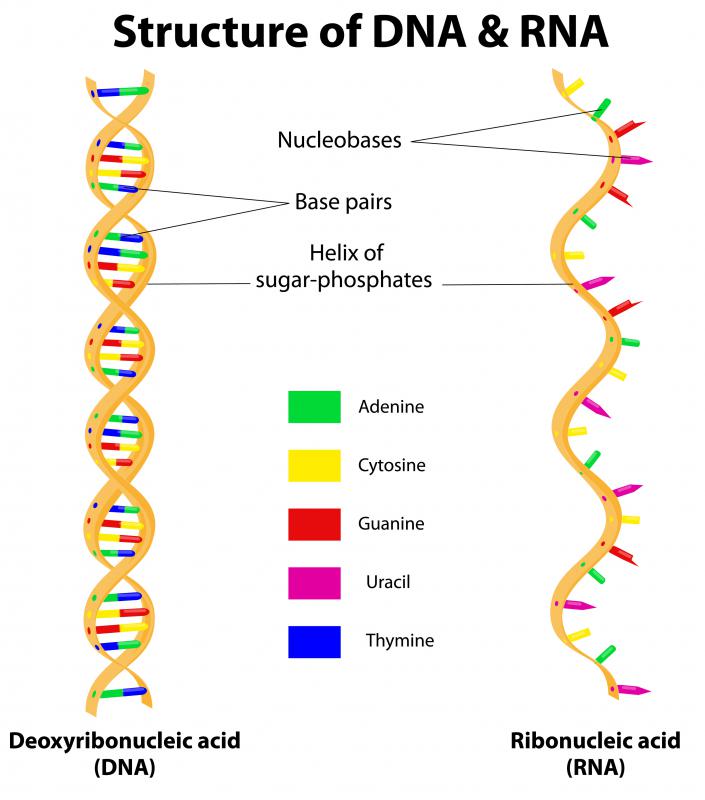At TheHealthBoard, we're committed to delivering accurate, trustworthy information. Our expert-authored content is rigorously fact-checked and sourced from credible authorities. Discover how we uphold the highest standards in providing you with reliable knowledge.
What Is the Site of Protein Synthesis?
Protein synthesis is a multi-step process that takes places at several different cellular locations, including the cell nucleus and at ribosomes. The genetic code that contains instructions for protein synthesis is contained in DNA, or deoxyribonucleic acid, which is stored in the cell's nucleus. DNA is transcribed into ribonucleic acid, or RNA, in the nucleus before the RNA is transported to the cytoplasm outside the nucleus. Outside the nucleus, a ribosome is a site of protein synthesis — ribosomes can be found in the cytosol, the fluid-like part of the cytoplasm, or attached to the rough endoplasmic reticulum. A process known as translation, by which an RNA transcript is translated to a functional protein, takes place at ribosomes.
The earliest site of protein synthesis is the nucleus. Proteins themselves are not produced in great quantities in this organelle, but RNA transcripts of the genetic instructions for protein synthesis are produced there. A ribosome is not capable of translating DNA directly to proteins, so the intermediary step of transcription is necessary. After transcription, the RNA transcript is moved out from the nucleus so the transcripts can be translated by ribosomes, which are not present in great numbers in the nucleus. Transcription occurs almost nonstop within cell nuclei, as there is a constant cellular demand for more proteins.

Translation, the process by which an RNA strand is used in the development of a protein, takes places at a ribosome. Ribosomes connect amino acids into long chains. These chains are generally useless as linear chains, but the chemical properties of the amino acids and their locations in the chain cause them to fold into a functional shape. In many cases, this folding occurs during synthesis — right at the site of protein synthesis — while in other cases, other proteins must assist in the folding process.

Some ribosomes exist in the cytosol, or the fluid-like part of a cell's cytoplasm, while others exist on a structure called the rough endoplasmic reticulum. A ribosome is not necessarily stuck permanently to the endoplasmic reticulum — ribosomes regularly attach to and leave it. The structure serves to transport certain proteins, particularly secretory proteins, to different cellular locations. After leaving the location where they are synthesized, the proteins are tagged with signaling chains that cause them to be directed to a given destination. The site of synthesis, then, is not always close to the site where the protein is actually used.
AS FEATURED ON:
AS FEATURED ON:













Discuss this Article
Post your comments